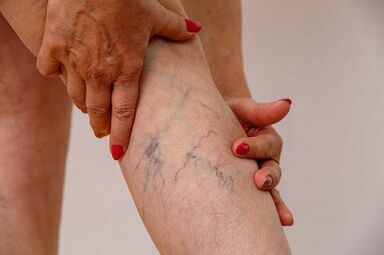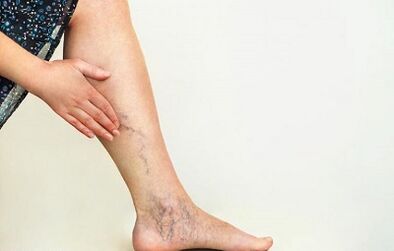
Varicose veins are one of the most common diseases, but not everyone realizes that they have it.
Therefore, the network of small veins in the legs is simply not noticed by many people, especially men, and middle-aged and elderly women who do not often pay attention to their appearance.
But the appearance of a network of veins in the legs is only the first stage of varicose veins. If left untreated, it will gradually enter the second and third stages, where the network of veins is replaced by dilated, swollen veins, and nodules form in them.It should be noted that one of the manifestations of varicose veins is varicose veins, commonly known as hemorrhoids, which can bring a lot of inconvenience and often lead to complications such as massive blood loss and anemia.
Varicose veins can occur for many reasons, and regardless of the cause and the form of the disease, treatment needs to begin as early as possible.In this case, the main direction of treatment is the use of intravenous tonic agents, which also apply to varicose veins of the lower limbs and hemorrhoids.
intravenous refills
Typically made from various herbs or fruit seeds, they affect the walls of the veins, causing them to narrow and encourage blood flow to the heart, preventing it from stagnating in the vessels.Thus, existing varicose veins can be eliminated and the progression of the disease can be prevented.
Local preparation is also very important.Moreover, for hemorrhoids, various suppositories can be used, and for varicose veins of the lower limbs, ointments with the effect of stabilizing blood vessels and thinning blood have shown quite high effects.Thus, the external manifestations of the disease can be eliminated, as well as symptoms such as heaviness in the legs and swelling of the legs, which appear with varicose veins after standing for a long time at night.
Starting treatment too late can not only worsen your symptoms but can also lead to complications that can be life-threatening.

Therefore, one of the most dangerous complications is the occurrence of pulmonary embolism.Therefore, stagnant blood in the veins of the lower extremities can lead to the formation of thrombus, which may be firmly attached to the vein wall or may not actually be connected to the vein wall.So, at some stage, the clot can open up and travel with the blood to the heart and then into the pulmonary arteries.As the blood clot travels into the pulmonary arteries, blood flow stops, causing lung tissue necrosis and bleeding.Sudden death may even occur if the blood clot is large and blocks the pulmonary artery itself.
In this regard, it is generally accepted that pulmonary embolism is the most dangerous complication of varicose veins, but this alone should not be considered to be dangerous for varicose veins, since, as mentioned above, the disease can also be complicated by bleeding and subsequent anemia.
In its early stages, varicose veins not only cause cosmetic inconvenience but also significantly reduce tolerance for physical activity.Therefore, after a short stay in a standing or walking position, a person begins to feel heaviness in the legs.Additionally, under more pronounced loads, considerable swelling can occur, resulting in a more restricted motor pattern.
Therefore, it should be said that varicose veins already cause inconvenience in the early stages of their appearance, and as the condition progresses, the symptoms only worsen and the possibility of complications increases significantly.
In view of this, it is necessary to start treatment of varicose veins at the earliest stage to prevent the appearance of aesthetic defects and possible disease progression with the development of thrombosis or thromboembolism.Furthermore, this disease can be treated very effectively with a comprehensive approach.If treatment is started at a later stage, it is very important to prevent complications.
Therefore, treatment should not be neglected even in the early stages, and in the later stages it is necessary not only to treat varicose veins (which may require surgery in severe cases), but also to prevent life-threatening complications such as pulmonary embolism.

















